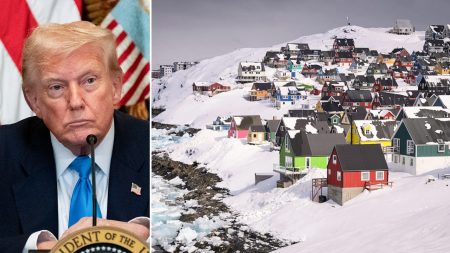The year 2024 witnessed the demise of several prominent international figures, many of whom played pivotal roles in global conflicts and political tensions. These deaths, often shrouded in controversy and violence, significantly reshaped the geopolitical landscape, particularly in the Middle East. From outspoken critics to leaders of militant organizations, their passing left a void and sparked both mourning and celebration across the globe. The circumstances surrounding their deaths ranged from alleged assassinations to military strikes, raising questions and fueling further unrest in already volatile regions.
Alexei Navalny, the prominent Russian opposition leader and staunch critic of Vladimir Putin, died in February while serving a prison sentence at the notorious IK-3 penal colony in Siberia. Russian authorities attributed his death to an irregular heartbeat and underlying health conditions, a claim vehemently disputed by Navalny’s widow, who insisted it was a politically motivated murder. This assertion gained traction given a previous poisoning incident in 2020, where Navalny was targeted with a suspected Novichok nerve agent. His death marked a significant blow to the Russian opposition movement and further strained relations between Russia and the West.
May witnessed the tragic helicopter crash that claimed the lives of Iranian President Ebrahim Raisi, Foreign Minister Hossein Amir-Abdollahian, and several other officials. Raisi, a controversial figure dubbed the “Butcher of Tehran” due to his alleged involvement in past human rights abuses, was a hardline conservative who presided over a period of heightened tensions with the West. The crash, attributed to adverse weather conditions, abruptly ended his presidency and ushered in a period of uncertainty for Iran’s political future.
The conflict between Israel and Hamas escalated dramatically throughout the year, culminating in the deaths of several key Hamas leaders. In July, Ismail Haniyeh, the head of Hamas’ political bureau, was killed in an airstrike in Tehran. While no one immediately claimed responsibility, Israel was widely suspected given its prior threats against Hamas leadership following a major attack on Israeli soil in October of the previous year (2023). Haniyeh’s death, coming shortly after the Iranian presidential inauguration he attended, further heightened tensions in the region.
September marked another significant blow to regional stability with the death of Hassan Nasrallah, the long-time leader of the Lebanese militant group Hezbollah. Nasrallah, who had led Hezbollah for decades and overseen numerous attacks against Israel, was killed in an Israeli airstrike in Beirut. The Israeli Defense Forces (IDF) justified the strike, citing Nasrallah’s role in orchestrating terrorist attacks and transforming Lebanon into a heavily armed base threatening Israel and the region. His death marked a turning point in the ongoing conflict between Israel and Hezbollah, leaving a power vacuum within the organization.
The culmination of the escalating conflict between Israel and Hamas occurred in October with the death of Yahya Sinwar, the leader of Hamas in the Gaza Strip. Sinwar, known as the “Butcher of Khan Younis” for his alleged brutality, was a key figure in the October 7th massacre of Israeli civilians. His death during an Israeli military operation in Gaza was seen as a major victory for Israel, although it also marked a further escalation in the already brutal conflict. The Israeli Prime Minister declared Sinwar a “dead man walking” months before his death, highlighting the long-standing Israeli campaign targeting Hamas leadership.
The deaths of these prominent figures in 2024 significantly reshaped the political landscape, particularly in the Middle East. From the silencing of a prominent Putin critic to the elimination of key figures in the Israeli-Palestinian conflict, these events fueled existing tensions and created new uncertainties. The circumstances surrounding these deaths, often violent and controversial, underscore the complex and volatile nature of global politics and the ever-present threat of conflict in regions grappling with deep-seated political and ideological divides. The ripple effects of these losses will undoubtedly continue to shape international relations and regional stability for years to come.













